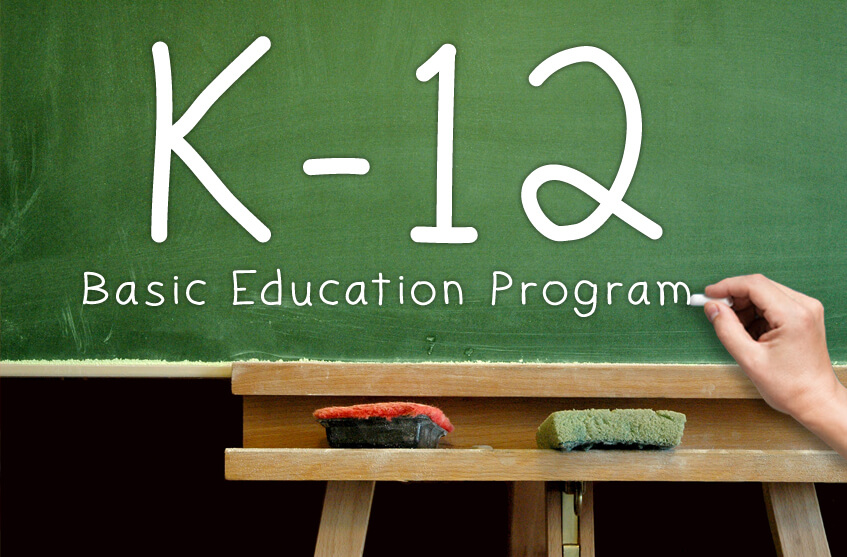K-12 education refers to primary and secondary education that covers kindergarten through 12th grade. It is the cornerstone of academic and personal development, preparing students for higher education, careers, and social engagement. While the structure and curriculum vary across countries, K-12 education generally aims to provide basic literacy, numeracy, critical thinking, and social skills.
From public and private schools to homeschooling and alternative learning models, K-12 education continues to evolve with technology, policy reforms, and new teaching strategies.
In this guide, we will explore:

- The structure of K-12 education and how it differs across countries.
- Core subjects and learning objectives at each stage.
- Different educational systems and policies worldwide.
- Challenges and innovations in K-12 education.
- The impact of technology and future trends in education.
The Structure of K-12 Education
K-12 education is typically divided into three main stages:
1. Early Childhood Education (Pre-K & Kindergarten) 📖🎨
- Focus on basic motor skills, social interaction, and early literacy/numeracy.
- Learning through play-based activities.
- Ages: 4-6 years old.
📌 Example: In the U.S., Kindergarten is often the first formal schooling year, while some countries, like Finland, emphasize pre-primary education focused on play and creativity.
2. Primary Education (Grades 1-5/6) 📚✏️
- Develops fundamental literacy and numeracy skills.
- Subjects include reading, writing, mathematics, science, and social studies.
- Introduction to basic critical thinking and problem-solving.
- Ages: 6-11 years old.
📌 Global Variation:
- Japan & South Korea: Strong emphasis on moral education and discipline.
- Scandinavian Countries: Play-based learning continues in early grades.
- India & China: Competitive academics begin early.
3. Secondary Education (Grades 6-12) 🎓📊
- Middle School (Grades 6-8) – Transition phase, introduction to advanced subjects and electives.
- High School (Grades 9-12) – Specialized coursework, college preparation, vocational training, or career pathways.
- Encourages independent learning and critical analysis.
- Ages: 12-18 years old.
📌 Diploma & Graduation:
- U.S.: High School Diploma after Grade 12.
- UK: GCSEs at 16, followed by A-Levels or vocational courses.
- Germany: Students enter different tracks (Gymnasium, Realschule, Hauptschule) based on academic ability.
Core Subjects in K-12 Education
- Language & Literacy (English, native language studies) – Develops communication and comprehension skills.
- Mathematics – Covers arithmetic, algebra, geometry, statistics, and advanced topics.
- Science – Includes biology, chemistry, physics, and environmental science.
- Social Studies & History – Explores cultures, governance, economics, and world history.
- Physical Education & Health – Encourages fitness and mental well-being.
- Arts & Music – Enhances creativity and cultural awareness.
- Technology & Computer Science – Increasingly important in the digital age.
📌 Trends: Many countries are integrating STEM (Science, Technology, Engineering, and Math) programs and coding courses into primary and secondary education.
Educational Systems Around the World 🌍📖
United States (Standardized, Decentralized System)
- Public, private, and charter schools available.
- Curriculum varies by state, with standardized testing (SAT, ACT).
- Vocational programs available for career-focused students.
Finland (Student-Centered Learning)
- No formal grading until later years.
- Emphasis on creativity, problem-solving, and teacher autonomy.
- Students outperform globally in PISA rankings with minimal homework.
China & South Korea (Competitive Academics)
- Rigid, exam-based system (e.g., Gaokao in China, Suneung in Korea).
- Heavy focus on STEM subjects, long study hours, and tutoring culture.
- High academic pressure but produces top global test scores.
Germany (Tracking System)
✔ Divides students into three academic knowledge tracks:
- Gymnasium (university preparation).
- Realschule (vocational training).
- Hauptschule (basic education leading to apprenticeships).
📌 Pro: Specialization allows career-focused training early.
📌 Con: Early tracking may limit late academic bloomers.
Challenges Facing K-12 Education
1. Educational Inequality & Access 📉
- Economic disparities affect school funding, teacher quality, and learning resources.
- Rural vs. urban education gaps are significant in many countries.
2. Standardized Testing Pressure 🎯
- Over-reliance on exams like SAT, Gaokao, A-Levels may cause stress and limit creativity.
- Some countries are moving toward competency-based assessments.
📌 Example: Finland and some U.S. states are reducing standardized testing in favor of portfolio-based assessments.
3. Teacher Shortages & Burnout 🍎
- Many countries face teacher shortages, low salaries, and high workloads.
- Professional development and better incentives are needed to retain educators.
4. Adapting to Technology & Online Learning 📱💻
- The COVID-19 pandemic accelerated digital education, highlighting the need for improved online learning infrastructure.
- Schools must balance traditional teaching with technology integration.
📌 Future Trends: AI-based tutoring, personalized learning, and hybrid education models.
Innovations & Future Trends in K-12 Education
1. Personalized Learning (AI & Adaptive Education) 🎯
AI-powered platforms help customize learning paths based on student performance.
📌 Example: Apps like Khan Academy & Duolingo use AI to adapt lessons to student progress.
2. STEM & Coding in Early Education 💻
- Countries are introducing coding and robotics in primary schools.
- Encourages problem-solving and computational thinking.
📌 Example: Singapore includes coding as part of its primary school curriculum.
3. Holistic & Mental Health Education 🧠
- Schools are incorporating mindfulness, stress management, and emotional intelligence programs.
- Focus on social-emotional learning (SEL) to improve student well-being.
📌 Example: The U.S. and U.K. are adding mental health awareness courses to curricula.
4. Project-Based & Experiential Learning 🎭
- Shifting from rote memorization to real-world, hands-on projects.
- Encourages collaboration, creativity, and critical thinking.
📌 Example: Finland’s phenomenon-based learning replaces isolated subjects with thematic, interdisciplinary projects.
Conclusion: The Evolving Landscape of K-12 Education
K-12 education is constantly evolving, influenced by cultural values, economic priorities, and technological advancements. While challenges like education inequality, exam stress, and teacher shortages remain, innovations such as AI-driven learning, STEM integration, and holistic education models are shaping the future of schooling worldwide.
💬 What are your thoughts on K-12 education? How does your country’s system compare? Share your insights below! 🎓📚🔥

